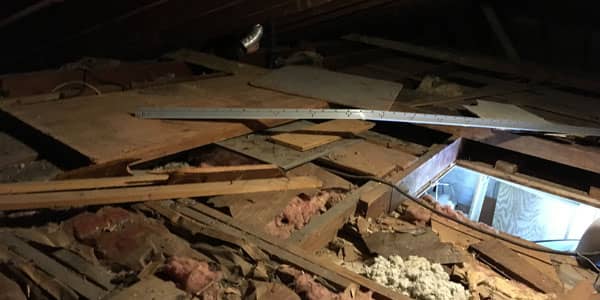St Louis - St Charles Insulation Company.


Old Home Can Be Energy Efficient
About a quarter of your home’s heat is lost through the roof. Think about the money you’re wasting. If you live in a very old home, you know who hard it is to keep warm air in during winter and cold air in during summer. But rather than insulating the whole home and introducing potential issues such as too much humidity, you may be able to seal the attic in order to best retain heat and save energy.
This involves sealing gaps or cracks in the walls and ceilings that could be allowing air to get into the attic and rafters, usually with the use of sealant such as caulk, weather stripping, and fireproof foam sealant. Let your trusted insulation contractor in O’Fallon MO handle this.
Common areas that can introduce leaks include ceiling fans, gaps around chimneys, light fixtures, ductwork, wiring, exhaust fans and pipes. Begin your inspection by checking around windows or vents, and by looking around the perimeter of your home for small gaps or holes.
Once you have addressed all air leaks, only then should you add insulation.
Tips For the Attic
- Check insulation for dampness, mold and mildew. Once mold has taken hold, it can be impossible to get it out of your existing insulation. Complete removal and replacement will be necessary. Same goes for signs of pest infestation, such as urine, feces, nests, etc.
- Ensure you have enough ventilation in your attic, and that it’s not blocked in any way. These include soffit vents that draw air in and ridge vents to push the air outside.
- If you have a vapor barrier, it should be facing the warm side (facing the floor if you live in a cold climate and facing the roof if you live in a warm climate).
- If putting new insulation over existing insulation, make sure the vapor barriers are located between the layers of insulation. Remove barriers if you have to.
- Think about installing metal roofing next time your roof needs replacement, as this material is lightweight, durable, long-lasting and energy-efficient.
Seal Basements and Crawl Spaces
Another big way to boost your old home’s indoor air quality, ventilation and energy efficiency is to seal your basements and crawl spaces. Seal up any cracks you see around windows and air vents, as well as gaps around ductwork, pipes and electrical wiring. If you have egress windows on your home, add well covers. Install vapor barriers in your crawlspaces and apply a waterproof sealing compound to all walls and flooring. Go the extra mile and add some batt insulation to floor joists.
Insulating Walls
Too many people mistakenly drill holes in walls, blow in cellulose insulation and then seal everything back up – too tightly. This encourages the formation of condensation on your walls, which you do not want. All that moisture can lead to mold, wood rot, and perpetually foggy windows.
The best way to insulate walls is from the exterior:
- 1. Apply a house wrap to the exterior walls.
- 2. Attach one-inch foam board insulation.
- 3. Put siding over the insulation.
- 4. Replace old windows with energy efficient models.
- 5. Use weather stripping and caulk window trim.
Call Addict Insulation in St. Charles MO
Let the professional insulation contractors in St. Louis MO handle your old house insulation project. It’s easy to schedule your no-cost consultation at 636-233-7314. Just contact us to learn more about how to insulate your old home.
Energy Saving BlogPopular Articles
- FAQs About Insulation in Missouri
- What Areas Should You Insulate Before Winter?
- The Greatest Risks to Your Home Caused by Poor Insulation
- Why Your Utility Bills Are So High and What You Can Do About It
- Can You Put New Insulation Over Old?
- Here Are 3 Ways Your Attic Could be Contaminated
- How Home Insulation Works in the Summer
- Tips and Tricks For Summer Insulation
- How to Fix Indoor Condensation
- Choosing the Right Spray Foam Contractor
- Why You Need Power Washing This Spring
- Don't Let Air Escape Your Home
- Tips For Saving on Your Energy Bills This Summer
- Should I Install a Radiant Barrier in My Home?
- Are You Wondering if Your Attic Has Enough Insulation?
- Do I Have to Replace Wet Insulation?
- Insulating Your Sunroom
- Should You Insulate Your Outdoor Spaces?
- All About Removing Insulation
- What to Know About Insulating a Crawl Space
- How to Spot Mold in Your Wall Insulation
- How to Prevent Moisture in Your Warehouse With Spray Foam Insulation
- What Factors Cause Heat Gain?
- The Problems That Come With Improper Insulation
- Insulation FAQs
- Why Should You Check the Insulation When Buying a Home?
- Why Seal and Insulate Your Home?
- Home Insulation: Safety and Health
- Should You Remove Old Insulation During Replacement?
- Can I Stay Inside My Home During Spray Foam Insulation Installation?
- Pros and Cons of Converting an Attic
- Pros and Cons of Converting an Attic
- When’s the Best Time to Insulate Your House?
- The Difference Between Blown Insulation and Spray Foam Insulation
- Is Your Garage Loft Too Hot or Too Cold? Heed These Tips
- 6 Health Benefits of Having a Quiet Home
- Insulation Prep is Critical For Installation
- The Dangers of Removing Insulation on Your Own
- What’s the Most Eco-Friendly Insulation?
- 7 Benefits of Spray Foam Insulation
- What is the Proper Insulation For Vaulted Ceilings?
- Signs Your Crawlspace Insulation Should be Replaced
- Why You Should Insulate Your Basement Walls
- Most Effective Ways to Soundproof Your Home Office
- How to Insulate an Old House
- 4 Tips to Make Your Attic More Energy Efficient
- Attic Insulation Problems: 5 Things to Look Out For
- What Causes Condensation on Interior Walls?
- How Deep Should Your Insulation Be?
- What to Consider When Choosing an Insulation Company
- Can You Add New Insulation Layers Over Old Ones?
- When Should You Remove Insulation?
- 7 Tips For an Energy Efficient Summer
- Creating a Healthy, Comfortable and Productive Workspace When Working From Home
- Why is Roof Ventilation Just as Important as Insulation?
- Why Spring is a Good Time to Insulate Your Attic
- 5 Signs of Damaged or Insufficient Insulation
- Is the Insulation in Your Walls Making You Sick?
- Under-Insulated Areas You May Be Overlooking
- The History Of Insulation.
- Pros and Cons of Attic Insulation
- Do You Need Insulation When Finishing a Basement?
- What is Drill and Fill Insulation?
- Which Insulation is Best for Garage Walls?
- How Air is Escaping Your Home and How to Prevent It
- 10 Things You Must Absolutely Insulate Before Winter
- 5 Reasons To Not DIY Insulation
- 5 Signs of an Under-Insulated Home
- 5 Benefits of Blown Insulation
- Cellulose vs. Fiberglass Insulation
- When is Insulation Removal Necessary?
- Tips to Keep Your Home Cool This Summer
- What is the Best Insulation for a Flat Roof?
- 5 Benefits of Power Washing
- Q & A About Insulation
- Reviews
- Energy Saving Blog






